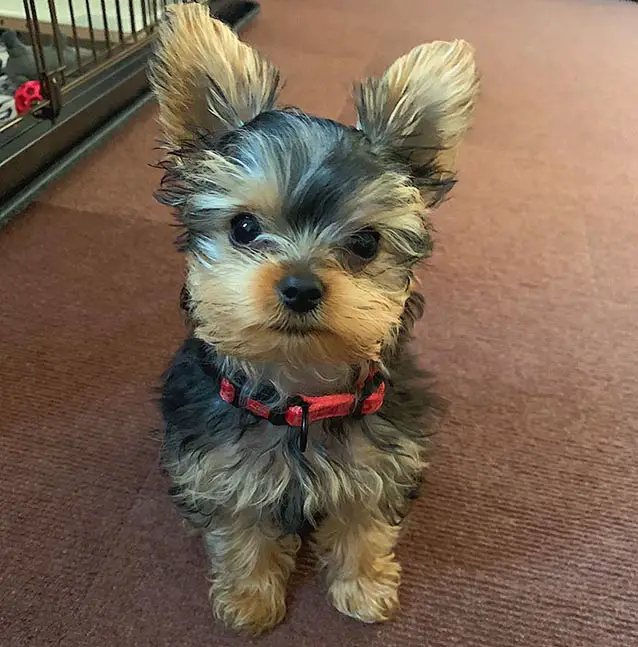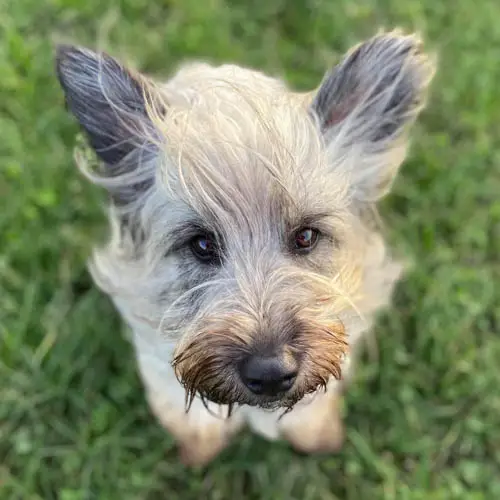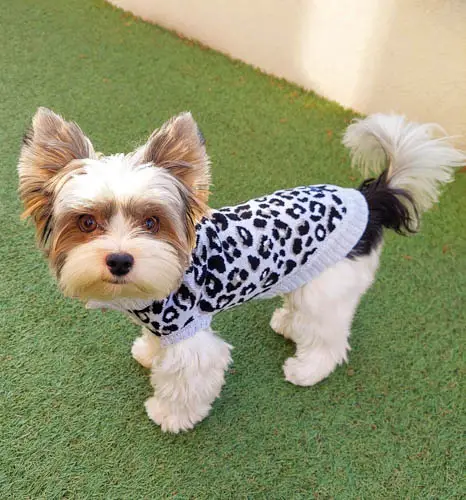Terriers are not only charming and delightful but also energetic and spirited companions. Their owners are often left contemplating the intricacies of their coats. Nevertheless, an inquiry frequently posed by terrier owners is whether these creatures boast fur or hair.
If you want to know the answer, do Terriers have hair or fur? We invite you to read this article.
Unveiling Terrier Coats: Hair or Fur?
Terriers are extremely popular not only because of their lively personalities but also because of their distinctive features. On the other hand, the mystery surrounding their captivating and enthralling coats has been a subject of interest.
For example, cats’ whiskers are specialized hairs that help them navigate in the dark and detect prey. In grooming and breeding contexts, hair and fur have specific meanings.
Hair usually refers to longer, finer, and softer strands that grow continuously and require regular trimming. Conversely, fur usually denotes shorter, denser, and coarser hair that sheds seasonally to adapt to the climate.
However, both terms are widely used interchangeably in everyday language. In dog shows, for instance, breed standards often specify the type and quality of hair or fur desirable for a particular breed.
Comprehending the disparities between fur and hair is vital for experts in the pet industry. This is simply because it has an influence on the looks, manner as well as well-being of the pet.
Terriers: Coats in the Spotlight

One thing that makes terriers very popular among dog lovers is their distinctive and unique coats. Some terriers, such as the Wire Fox Terrier, have a wiry and harsh coat of a dense undercoat covered by a wiry topcoat.
The coat of this particular variety bears the distinction of being a double coat, characterized by two distinct layers of hair. Other terriers, such as the Soft Coated Wheaten Terrier, have a soft and silky coat made up of a single layer of hair. This type of coat is known as a single coat, as it only has one layer of hair.
Understanding Hair vs. Fur
The differentiation between hair and fur necessitates thoroughly exploring the nuanced distinctions that define these two concepts. Despite being constituted of the same protein, keratin, hair, and fur manifest distinct structural and functional features.
Hair tends to be longer, growing continuously, and often having a greater range of textures, from fine to coarse. Mammals, including humans, frequently exhibit this trait, while fur, conversely, typically comprises shorter and denser fibers, providing insulation, protection, or concealment. This attribute can be seen amongst animals that have adapted to different weather conditions.
Assessing the Complexities of Terrier Coat Diversity

This breed of dog exhibits remarkable variations of coats, which surely capture the attention of those who see it and simultaneously kindle curiosity. If you take a closer look at these amazing coats, you will see a lively and animated spectrum of colors, patterns, designs, and hues emerge. This highlights the strange diversity encompassed in the terrier breed.
Consider the resilient and weather-defying wiry exterior of the Wire Fox Terrier, or contrast it with the abundant and velvety coat of the Yorkshire Terrier. Every type of terrier dog has its unique form of fur. This is a testament to their origin, inherent and adaptation purpose.
The variation of coats is proof of the careful artistry of discerning breeding, which has shaped terriers into resolute hunters and treasured companions. However, it depends on the role they were bred for over generations.
If the coat is denser and coarser, it gives the dog a remarkable defense and protection against the elements, regardless of its harshness. This gives them protection while navigating terrains or forests.
On the other hand, a smooth and silky coat offers a combination of sophistication and comfort, mirroring the genteel roles some breeds of terriers have taken on.
These disparities and distinctions in the coat type also considerably influence the need for grooming and care routines. This emphasizes the importance of understanding and valuing the understated details of terrier coats.
By investigating the terrier coat variations, we not just undo the surface allure but also reveal the practical as well as logical importance of these features.
They play a vital role in the overall appeal and charm of these spirited canines, speaking volumes about their heritage, adaptability, and long-lasting connection with humanity.
Terrier Coats: Unraveling the Genetic Mosaic

The amazing looks of terrier coats go beyond mere aesthetics. Getting used to the intricate genetics which shapes these very inviting and diverse coats provides a remarkable sight into the origin as well as the evolution of this stunning furry friend.
The coats of the terrier are the outcome of the compound interplay of genetic aspects, which extends to generations. The shapes, outlines, and styles govern the pattern, color, texture, and length of the coats, which add to the remarkable variety seen in this breed. Via selective breeding, people have played a vital job in refining these features, which are tailored to serve different preferences and functions.
The course of selective breeding includes careful selection of dogs that need to breed with desired coat features to preserve and continue those traits in descendants.
For instance, terriers bred for hunting may possess wiry, water-resistant coats that shield them from the elements, while those bred for companionship might showcase softer, more luxurious coats. In due course, the breeding methods have resulted in the appearance or arrival of exceptional breeds. Each breed was categorized by its exceptional coat.
Moreover, this breed’s background and geographic beginning have also affected its coats.
Adaptations to definite environments, which include harsh climates or uneven terrains, have resulted in the making of coats that offer the best protection.
Practical Implications: Caring for Terrier Coats

Border Terriers possess a dual-layered coat comprising a durable and water-resistant outer layer and a plush undercoat designed to provide warmth. Nevertheless, it is not uncommon for certain breed members to exhibit anomalous characteristics, such as a single layer or a thin undercoat, which is inconsistent with the breed standard.
Additionally, some may grow an extensive yet scanty topcoat, frequently seen in the blue and tan varieties. Proper maintenance of the Border Terrier’s coat requires minimal effort, with routine daily brushing for a brief duration to eliminate dead hair and detach loose undercoat. Regular brushing also aids in removing any residual dirt and grime present on the coat, ensuring its cleanliness and overall health.
It is imperative to exercise prudence when bathing a Border, except in dire circumstances such as impromptu immersion in cow excrement. In the majority of cases, dry dirt can be effortlessly brushed out.
The coat’s outer layer is impervious to water, and even the most mild shampoo can compromise the natural oils. Oil removal makes the coat susceptible to water intrusion and an increased affinity for grime. It is therefore recommended to utilize solely lukewarm water without any cleansing agents or detergents.
Terrier Types of Coats

Terrier is a versatile and adaptable breed with a rough, ready appearance that is easily maintained. Regular grooming is necessary to keep Russell’s coat in good condition, but it is not a high-maintenance breed.
The three coat types – smooth, broken, and rough – offer options for different preferences and lifestyles. The smooth coat requires minimal grooming and can be maintained with a once-a-week rubdown with a soft brush or hound glove.
The rough and broken coats require more attention, with weekly brushing or combing to remove tangles or mats. In addition to coat care, the Russell Terrier’s nails should be trimmed monthly to prevent them from becoming too long and causing discomfort or injury.
It is also important to check the ears weekly for debris or excess wax and clean them as needed to prevent infection. Regular grooming is highly suggested if you want to keep your terrier’s coat healthy and shiny.
To Sum Up
Terriers are remarkable and set apart from other breeds because of their coats. If you compare them to other dogs, they have various coats. Some have wiry coats, while others have soft, silky coarse coats.
This variety invites us to reconsider the conventional hair vs. fur dichotomy and appreciate the complexity of the genetic makeup that creates these distinct coat types.
When assessing the coats of this dog, make sure to pay attention to the texture. Originally, this dog breed was raised to hunt rodents and other small prey. Therefore, their coats were made to keep them safe from different elements and simultaneously give them a level of camouflage.
For example, the wiry coat of a Wire Fox Terrier is designed to repel dirt and water while also blending in with its surroundings. On the other hand, the soft and silky coat of a Yorkshire Terrier was developed to keep them warm in colder climates.